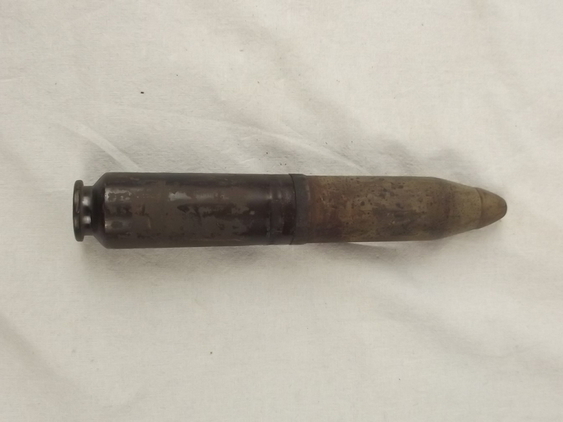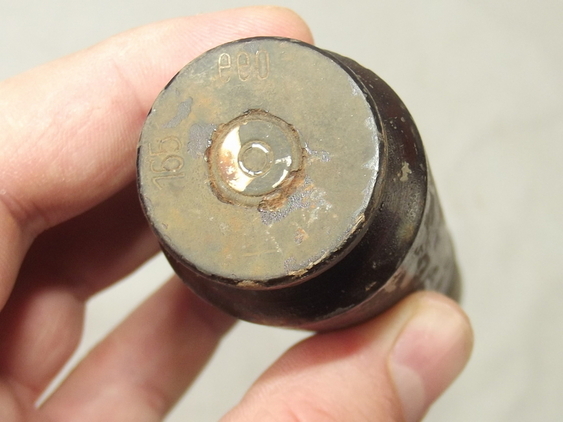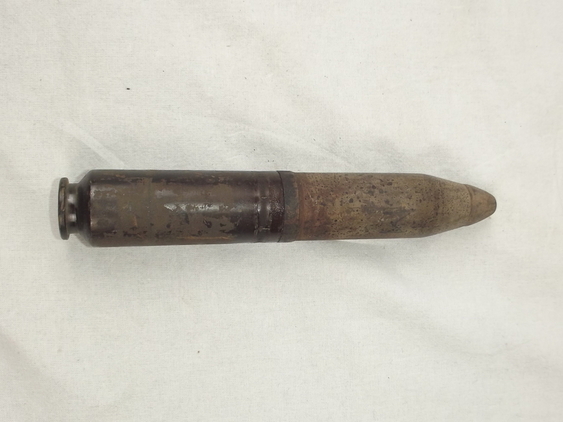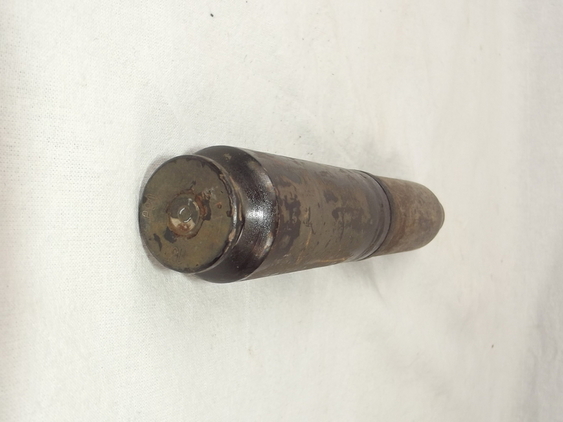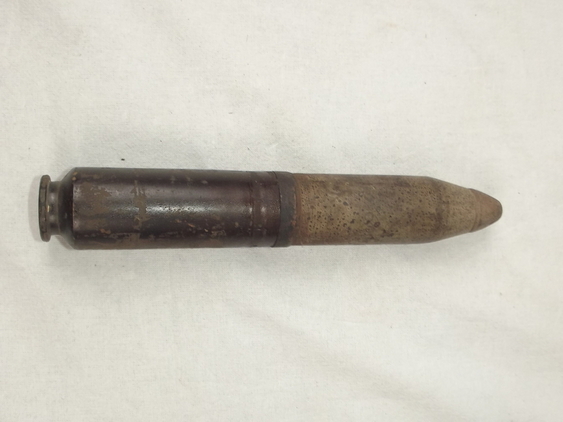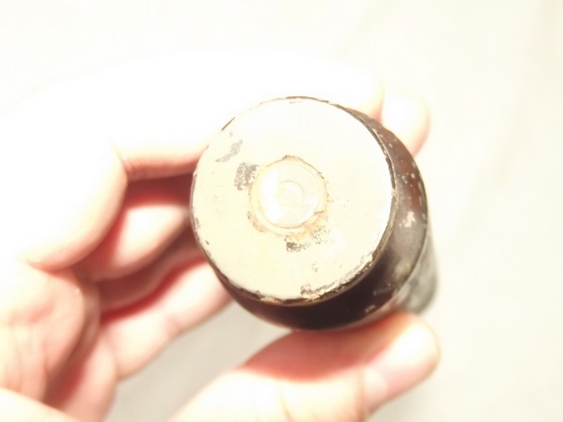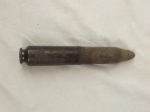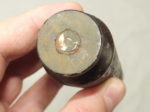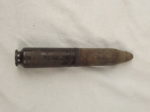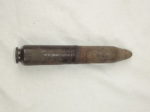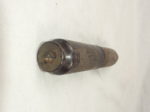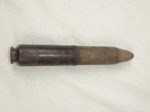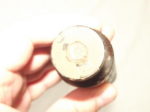The MK 108 (Maschinenkanone—”machine cannon”) was a 30 mm caliber autocannon manufactured in Germany during World War II by Rheinmetall‑Borsig for use in aircraft.
The round is stamped ‘165’
The MK 108 saw widespread use among fighters tasked with shooting down enemy bombers. Some of the aircraft deploying, or intended to be armed with, the MK 108 were Messerschmitt Bf 109, Messerschmitt Bf 110, Messerschmitt Me 163, Messerschmitt Me 262, Focke-Wulf Fw 190, Focke-Wulf Ta 152, Focke-Wulf Ta 154, Heinkel He 162, Heinkel He 219, Horten Ho 229 and Junkers Ju 388.
The MK 108 was also fitted to night fighters in an unusual installation, called “Schräge Musik” (German colloquialism: “jazz”, literally “awkward music” or “slanted music”). In this configuration, the cannons were mounted in the fuselage, aiming upwards and slightly forwards at an oblique (18 to 30 degree) angle, depending on fitment and aircraft. This allowed the night fighter to attack bombers, often undetected, by approaching from underneath the enemy aircraft – many British heavy bombers had neither weapons on the ventral fuselage nor windows for vision. This installation was so effective that discovery and news of its adoption was much slower than usual in reaching British night-bombing forces, as there were rarely any survivors from the attacks to report the new threat. This system was fitted to some versions of the He 219 Uhu, late-model Bf 110 night fighters, Junkers Ju 88 & 388 and the Dornier Do 217N model. It was also fitted more rarely to the (prototype) Focke-Wulf Ta 154 and Fw 189 along with the planned, two-seat Me 262B-2 jet night-fighter. In the latter case this produced a jet fighter with six MK108 cannons – with the fitment of the projected mass-produced, mid-VHF band FuG 218 radar.
~ Dimensions ~
The round is 7.75 inches (19.7 cm) long.
It weighs 455 grams
~ Condition ~
The round is fair condition with signs of ageing.
ref. GS73860A7 / PQD0LMN12E4RR3

